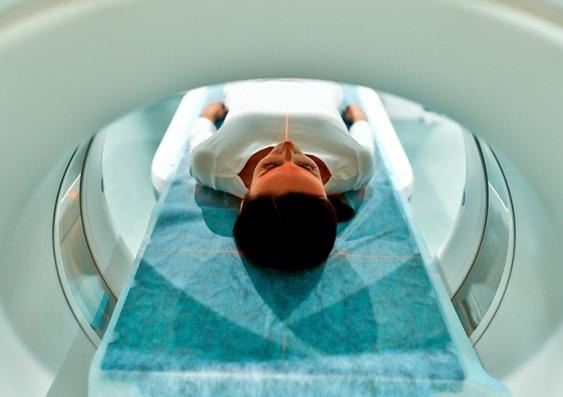Study shows weakened brain connections in young people at risk of bipolar disorder
[ad_1]
A study that confirmed adjustments in the mind in all those at chance of producing bipolar dysfunction raises new hope about early intervention.

A mind imaging research of younger individuals at higher threat of creating bipolar dysfunction has for the initially time observed proof of lowered connections in between important parts of the mind in late adolescence.
Up until eventually now, healthcare researchers knew that bipolar ailment was linked with reduced communication amongst brain networks that are associated with emotional processing and wondering, but how these networks created prior to the condition was a secret.
Right now in a research released in The American Journal of Psychiatry, researchers from UNSW Sydney, the Hunter Medical Study Institute (HMRI), the University of Newcastle and worldwide institutions showed proof of these networks diminishing in excess of time in younger grown ups at superior genetic chance of acquiring bipolar condition – which has significant implications for long run intervention techniques.
The researchers employed diffusion-weighted magnetic imaging (dMRI) technological know-how to scan the brains of 183 men and women about a two-year time period. They examined the progressive variations in the brain scans of people with large genetic danger of developing the problem around a two-calendar year period, ahead of comparing them with a management group of men and women with no danger.
People with a parent or sibling who has bipolar condition are considered higher genetic threat, and are 10 situations far more very likely to establish the ailment than people without having the shut loved ones backlink. In the mind graphic scans of 97 folks with higher genetic possibility of bipolar disorder, the researchers noted a lessen in connectivity amongst areas of the brain devoted to emotion processing and cognition concerning the two scans throughout the two yrs in between scans.
But in the regulate group of 86 men and women with no family members record of psychological disease, they observed the reverse: an increase in the neural connections among these exact same regions, when the adolescent brain matures to come to be extra adept at the cognitive and psychological reasoning expected in adulthood.
Scientia Professor Philip Mitchell AM, a practising educational psychiatrist with UNSW Drugs & Wellbeing, claims the conclusions increase new suggestions about treatment method and intervention in bipolar disorder developing in young men and women with a bigger possibility.
“Our research truly helps us recognize the pathway for people at chance of bipolar,” he claims.
“We now have a considerably clearer notion of what’s happening in the brains of youthful people today as they grow up.”
Prof. Mitchell suggests that currently being a clinician as perfectly as a researcher, he sees first-hand how youthful folks can have their life abruptly turned upside down when they experience their initially manic episode.
We see a large amount of dazzling, capable kids definitely taking pleasure in daily life and then bipolar problem can be a large impediment to what they want to attain. With our new awareness about what really happens in the brain as at-threat teenagers strategy adulthood, we have the chance to develop new intervention tactics to either cease the affliction in its tracks, or cut down the affect of the health issues.”
Philip Mitchell AM, Scientia Professor and Practising Educational Psychiatrist, UNSW Medication & Wellbeing
Mental graphic
Professor Michael Breakspear, who led the group at HMRI and the College of Newcastle that carried out the examination of the dMRI scans, says the review illustrates how improvements in technology can potentially deliver about lifestyle-modifying advancements to the way that mental diseases can be addressed.
“The kinfolk of men and women with bipolar problem – especially the siblings and small children – usually request about their have upcoming threat, and this is a dilemma of superior particular concern,” he claims.
“It’s also an challenge for their health professionals, as the presence of bipolar dysfunction has crucial medicine implications.
“This review is an essential action in possessing imaging and genetic tests we can conduct to enable identify these possible to establish bipolar condition, just before they build disabling and stressing signs and symptoms of the condition. This would bring psychiatry closer to other branches of drugs the place screening exams are aspect of conventional care.”
The scientists stress that a lot more investigate is necessary before changes are manufactured to current modes of cure. It also would not be useful, nor low-cost, for all people with a genetic possibility of creating bipolar disorder to have brain scans to see if the brain is exhibiting signals of reduced connections.
“The important acquiring of our analyze is that there is progressive adjust in the brains of youthful people today with risk of bipolar which suggests how crucial intervention approaches may well be,” claims Prof. Mitchell.
“If we can get in early, irrespective of whether that is coaching in psychological resilience, or maybe prescription drugs, then we may be able to reduce this progression in the direction of significant improvements in the brain.”
Dr. Gloria Roberts, a postdoctoral researcher performing generally on the challenge given that 2008 with UNSW Medication & Health and fitness, has observed how new onsets of psychological disease in youth at hazard of acquiring bipolar condition can drastically effect psychosocial operating and quality of lifestyle.
“By advancing our comprehending of the neurobiology of possibility as well as resilience in these large-risk folks we have the chance to intervene and improve the excellent of life in persons who are most at-hazard.”
As a final result of the new conclusions, the researchers are setting up to do a 3rd follow-up scan of participants in the review. They are also in the early stages of building online systems that guide in the enhancement of resilience while furnishing younger men and women with abilities in running anxiety and melancholy, which they hope will decrease their prospects of creating bipolar condition.
Lived knowledge
Retired mom of two Patricia* appreciates very first-hand how bipolar problem can be handed down via family members lines, possessing had a late spouse who lived with the problem and just one of her two small children also acquiring it.
“My partner had it, and he thought his father and his grandfather had it,” Patricia suggests.
“It’s also distantly in my own family. My spouse and I had been each very fascinated in contributing to discovering out much more about it. We the two believed really firmly that the responses lie in neuroscience.”
So when she uncovered out about a analyze that sought to scan brains of men and women with and with no threat of bipolar disorder, she believed it was a wonderful possibility to contribute. Her daughter experienced been diagnosed in her mid-teenagers, but her brother was not influenced – each are now in their early 30s.
“I would enjoy for them to discover a way of eradicating it,” Patricia states of analysis into bipolar dysfunction.
“It brings about so substantially strife for the people today that have it, and it really is very hard on the liked ones. I know that there are some men and women that have some periods of mania in which they experience fairly excellent. But which is not all people. Several of them come to feel irritable when they are manic. And a lot of individuals have combined melancholy and mania, so it’s not a great disorder.”
She suggests her little ones may well aid researchers find out what could be shielding those people at hazard who never go on to produce the sickness.
“So you know, if they can understand far more and even appear up with some way of controlling it, we’re joyful to enable.”
* Name modified for privateness factors
Supply:
Journal reference:
Roberts, G., et al. (2022) Longitudinal Improvements in Structural Connectivity in Young Folks at Large Genetic Chance for Bipolar Dysfunction. The American Journal of Psychiatry. doi.org/10.1176/appi.ajp.21010047.
[ad_2]
Supply link







